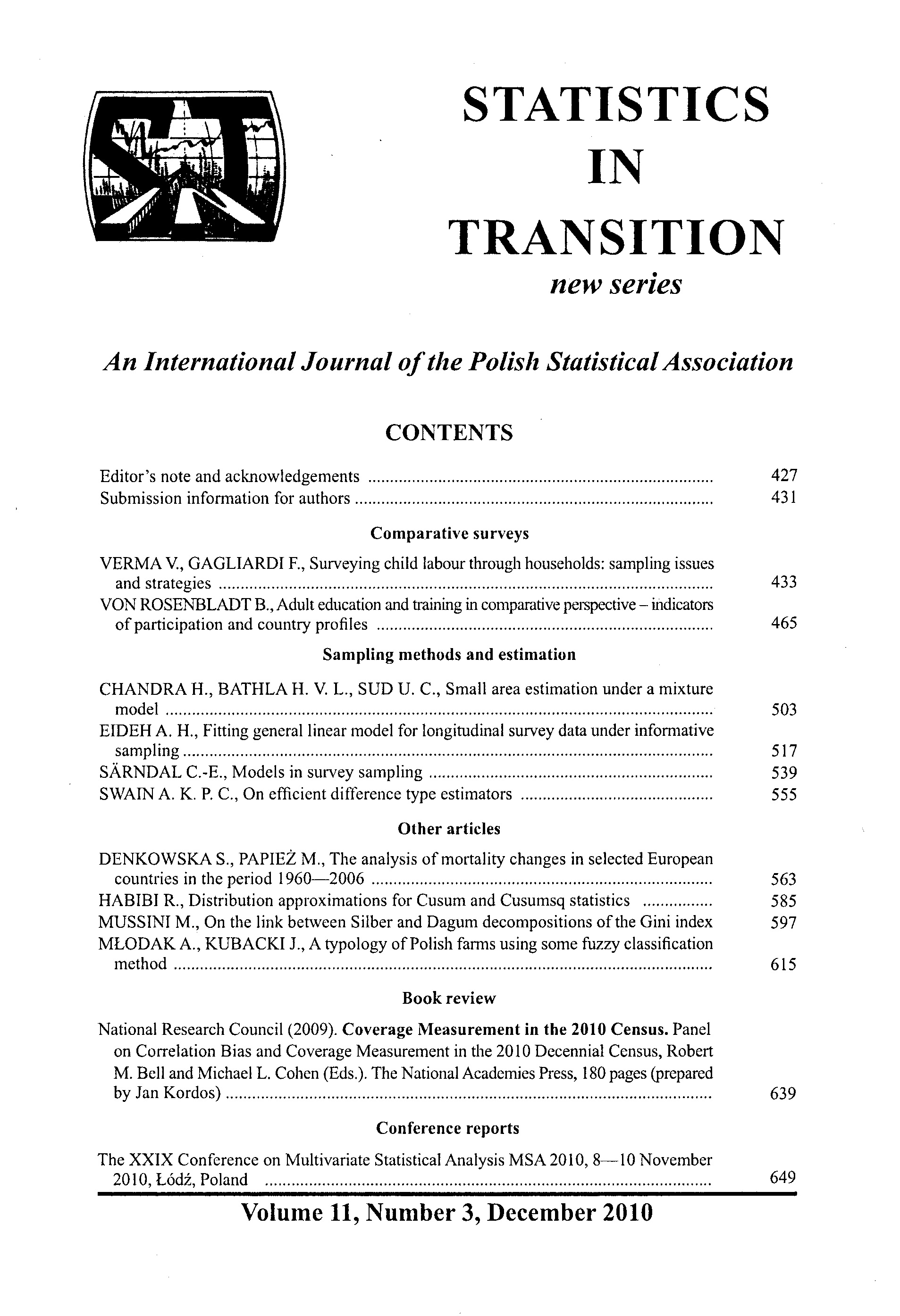ARTICLE
ABSTRACT
This paper considers a more efficient difference type estimator in a finite population set-up. Ratio type and regression type estimators are derived as special cases. Further efficiencies of these estimators are compared with classical ratio and regression estimators. Numerical illustrations are provided to compare efficiencies of different competitive estimators.
KEYWORDS
Difference type, Ratio type and Regression type estimators, Efficiencies of estimators, Auxiliary information, Simple random sampling without replacement.
REFERENCES
BEDI, P.K. and HAJELA, D. (1984). An estimator for mean utilizing known coefficient of variation and auxiliary variable, J. Stat. Res., 18, 29-33.
COCHRAN, W.G. (1977). Sampling Techniques, 3rd ed., Wiley.
GUPTA, P.C. (1978). On some quadratic and higher degree ratio and product estimators, J. Ind. Soc. Ag. Stat., 30, 71-80.
KAUR, P. (1985). An efficient regression type estimator in survey sampling, Biom. Journal, 27, 107-110.
MENENDEZ, E. and REYES, A (1998). On an efficient Regression Type estimator, Biom. J., 40, 1, 79-84.
PANDEY, G.S. (1980). Product - Cum - Power estimators, Cal. Stat. Assoc. Bull. 29, 103-108.
PRASAD, B. (1986). Some unbiased estimators Versus mean per unit and ratio estimators in finite population sample surveys, Comm. in Stat. Th. and Meth., 15, 3647-3657.
RAO, I.S. (1978). On a method of using auxiliary information, contributions to statistics, edited by Department of Statistics, Utkal University, Bhubaneswar (India), pp. 65-69.
RAO, T.J. (1993). Auxiliary information in sample surveys: unpublished manuscript.
RAY, S.K. and SAHAI, A. (1980). Efficient families of ratio and product type estimators, Biometrika, 67, 211-215.
RAY, S.K. and SINGH, R.K. (1981). Difference - Cum - ratio type estimators. J. Ind. Stat. Assoc., 19, 147-151.
SRIVASTAVA, S.K. (1967). An estimator using auxiliary information in sample surveys, Cal. Stat. Assoc. Bull., 16, 121-132.
TAILOR, R and SHARMA, B (2009). A modified Ratio-cum-Product Estimator of finite population mean using known coefficient of variation and coefficient of kurtosis, Statistics in Transition-New Series, Vol - 10, PP. 15-24.
